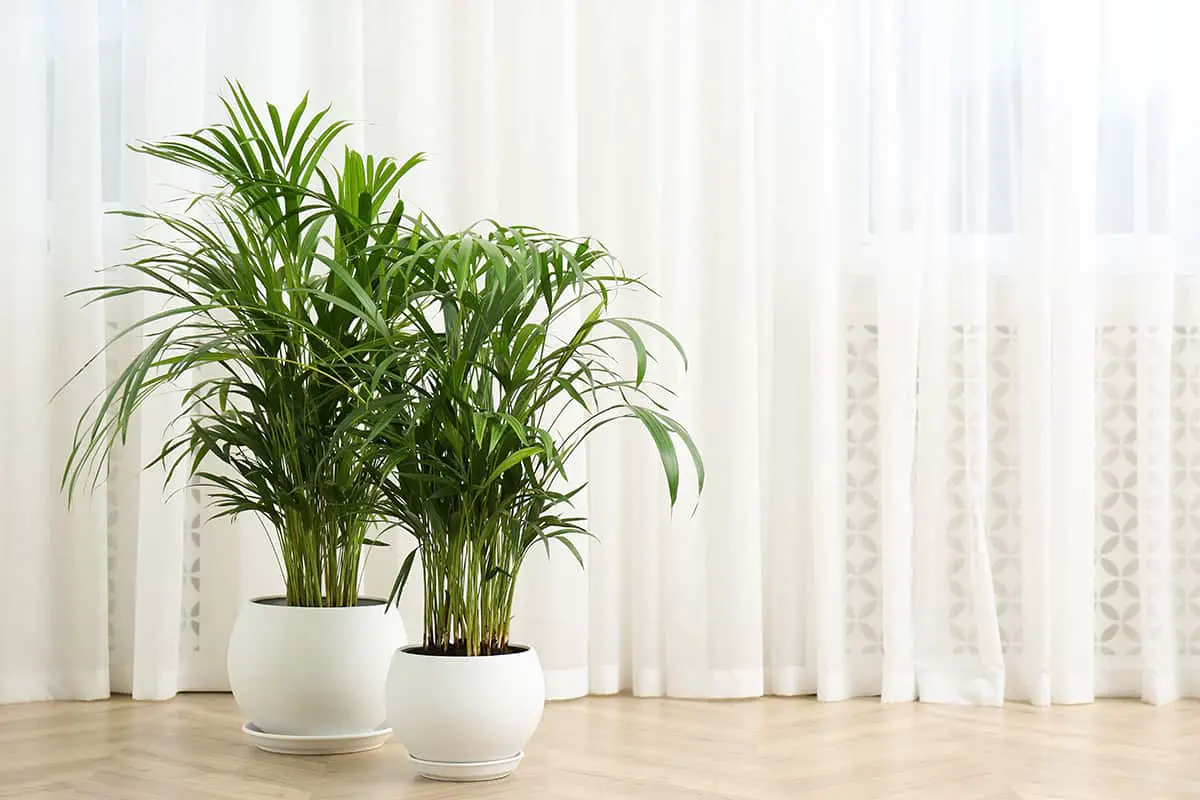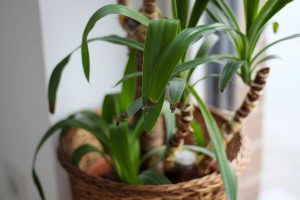The Cat Palm does not take the shape of a tree like many palms. It lacks a central trunk or main stem, and instead produces a dense clump of multiple slender stems which hold large, arching fronds of pinnate green leaflets.
These plants make excellent tropical-style privacy borders when planted in a row, because of the mass of fronds. They can also be kept as attractive houseplants, creating a similar look to the Areca Palm.
- Botanical name: Chamaedorea cataractarum
- Common names: Cat Palm, Cataract Palm, Cascade Palm
- Plant family: Arecaceae
- USDA hardiness zone: 9- 11
- Mature height: Up to 8 feet
- Mature spread: Up to 6 feet
Table of Contents
Varieties of Cat Palm
There are no other varieties of Cat palms. However, there are other species within the same genus of Chamaedorea. These include:
Parlor Palm (Chamaedorea elegans)
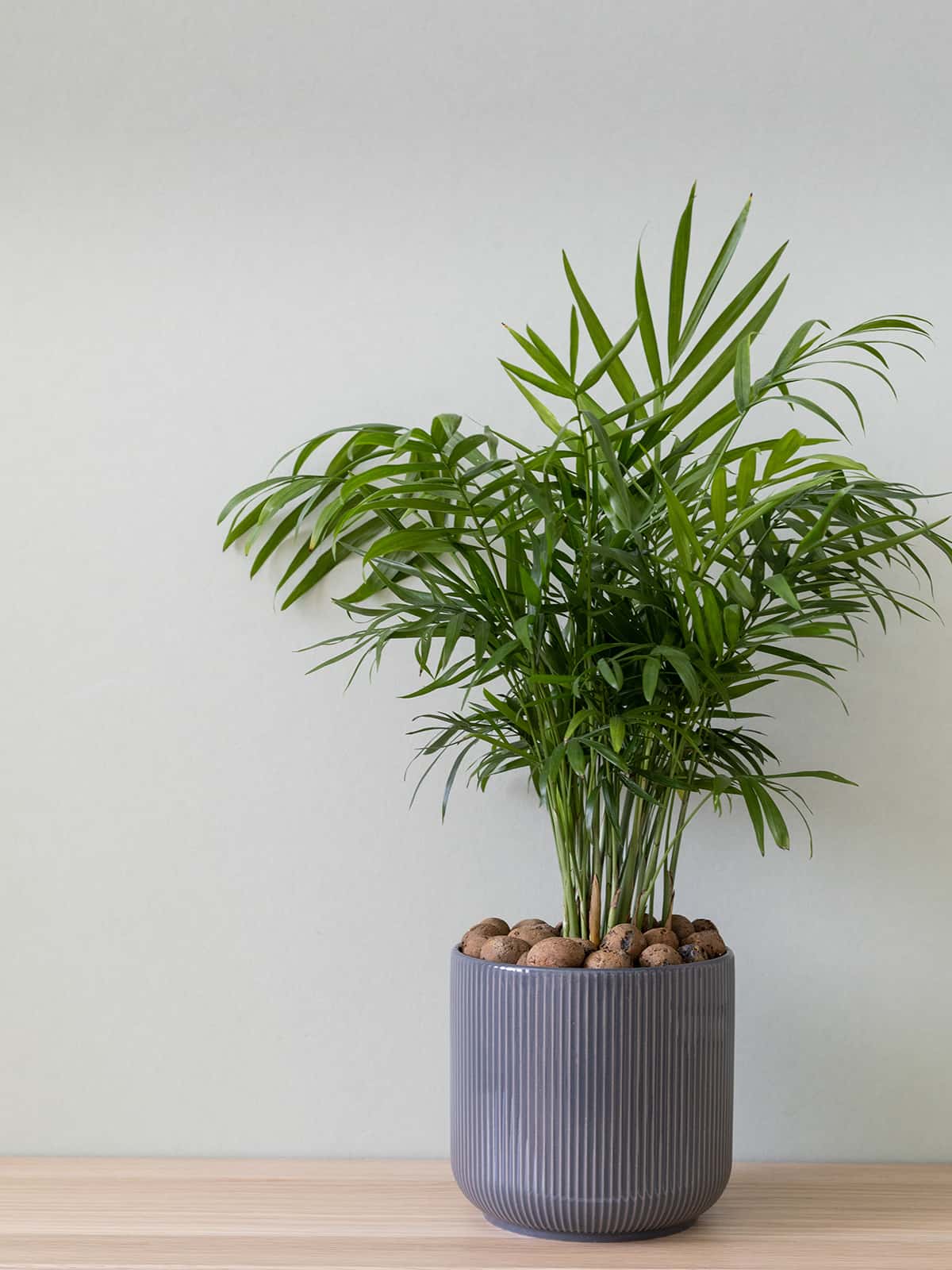
The Parlor Palm is a popular type of palm, which is more commonly seen in use as a houseplant compared to the Cat Palm.
The two share a lot of physical similarities, though the Parlor Palm is considered to be easier to care for, which may be the reason it is more popular. The Parlor Palm can tolerate shade and will withstand very short periods of drought.
Bamboo Palm (Chamaedorea seifrizii)
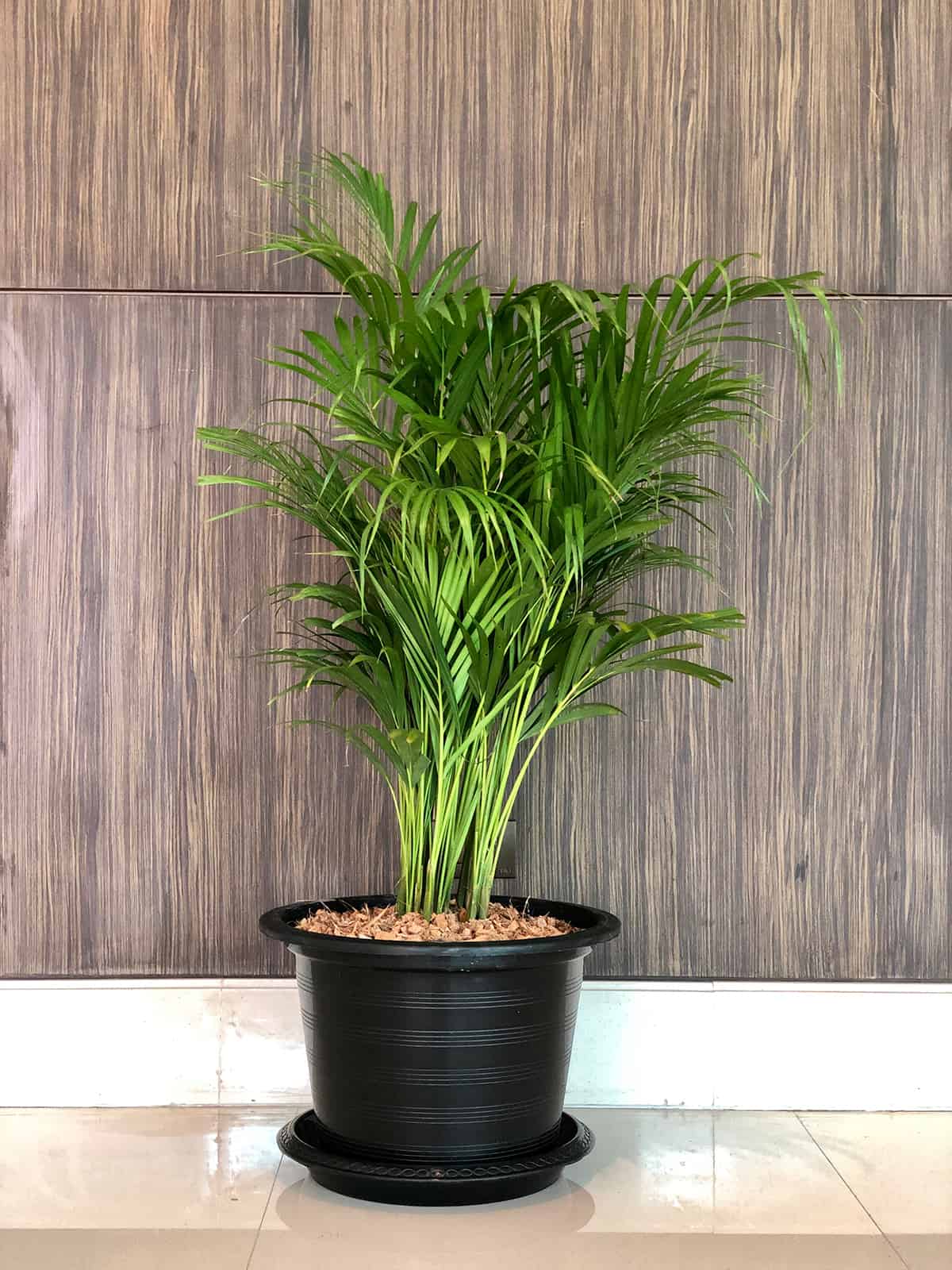
The Bamboo Palm is so-called because it resembles the look of bamboo grass, though it is not related to true bamboo. The stems of this plant look similar to bamboo canes, and the fronds are fine and feathery, just like bamboo grass.
Unlike most palms, a Bamboo Palm will grow in low light, though this palm tree will have a faster growth rate when grown in indirect bright light. It is suitable for growing outside in USDA hardiness zones 10- 12.
Pacaya palm (Chamaedorea tepejilote)
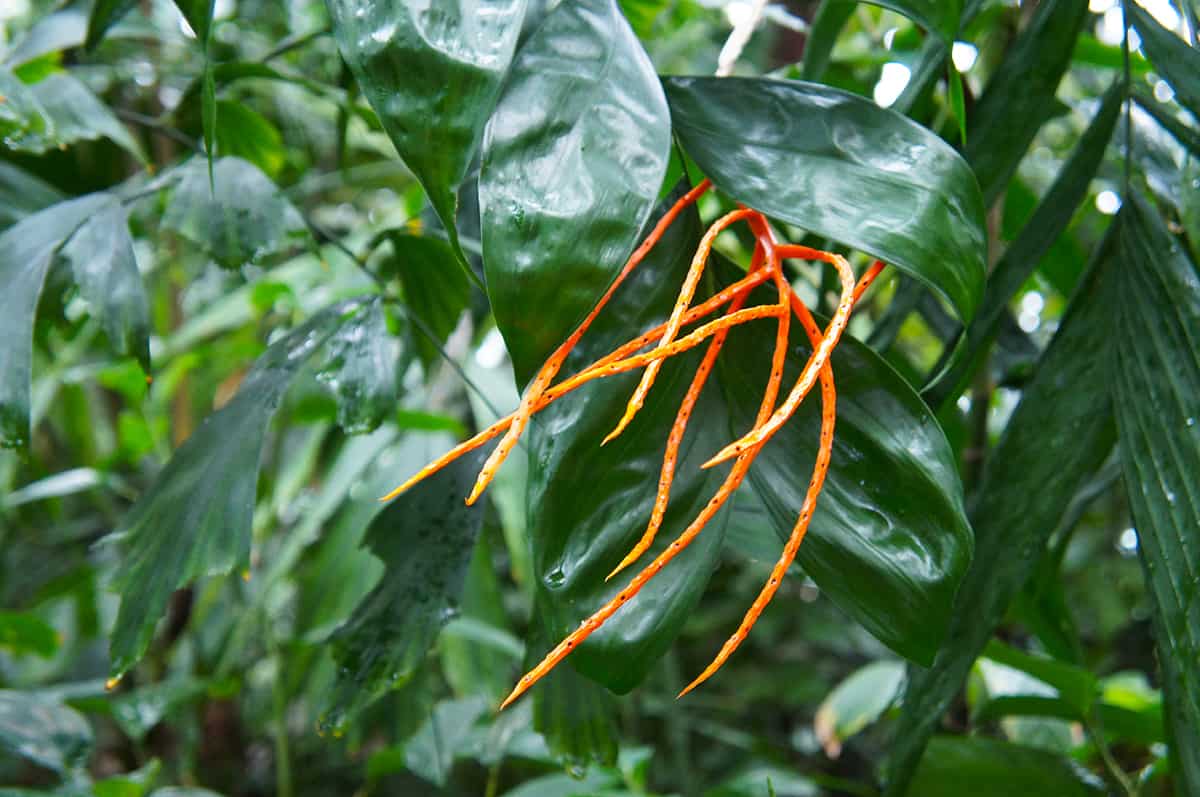
The Pacaya Palm is a lesser known palm in the Chamaedorea family, which is native to South America. In Central America, most notably El Salvador and Guatemala, this plant is an important crop because of its edible flowers, which are considered a delicacy. They are typically fried, battered, eaten in salads or in tomato sauces.
How to Care for your Cat Palm
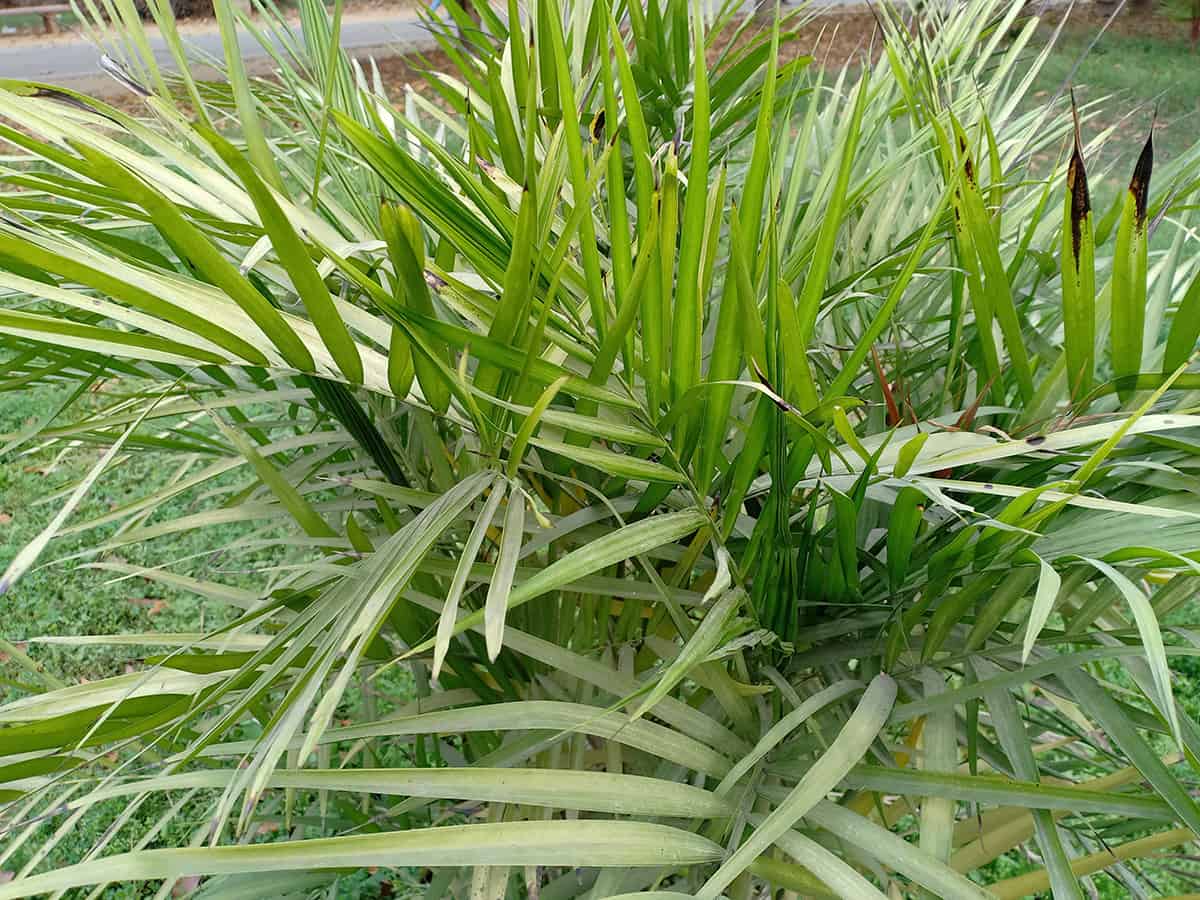
Light
Cat Palms are low-growing plants that only grow to heights of between 6 and 8 feet. This means that when growing in their native habitat, they are often shaded by the overhead canopy of taller trees. When growing Cat Palms outside, they should be positioned in dappled shade or partial shade.
They can be susceptible to scorch from too much direct sun, so shade during the hottest portion of the day will be ideal. You could shade the Cat Palm by planting it beneath larger trees and shrubs or close to tall structures such as walls or fences, which will also provide some shade.
For Cat Palms that are kept indoors, they should be allowed plenty of bright indirect light but kept away from direct light. This could mean placing them several feet away from a south-facing window or in a window that is east or west facing. Alternatively, create dappled shade indoors for this plant by setting it behind window blinds or sheer drapes.
Soil
Getting your soil right is an important aspect of keeping most types of palms. These plants like to be grown in soil that is continually moist, but not wet. As well as ensuring you water the plant at an acceptable level, the consistency of the soil will go a long way to enabling the roots of a Cat Palm to absorb enough moisture without being so wet that they rot.
The soil needs to be well-draining because this will encourage any excess moisture to drain away from the roots and out of the drainage holes at the base of the pot. This is vital in preventing root rot, which is caused when the roots are left to sit in soggy or waterlogged conditions.
However, you don’t want soil that drains too quickly because the root’s requirement for plenty of water will not be met. For Cat Palms which are kept as houseplants, a regular potting soil mix combined with a generous amount of sand or perlite will work well. The sand and perlite improve drainage so that the soil does not hold stagnant water.
You can also add topsoil or compost to the mix, which will help the soil retain some moisture. If your Cat Palm is planted outside directly in ground soil, you can amend the soil depending on what type of soil already exists. Sandy soil is ideal, so if your soil is not already sandy, then work in some extra sand.
Water
The Cat Palm loves moisture, so the soil of your plant should never be allowed to dry out. Instead, you’ll want to water it frequently with the intention of keeping the soil moist but never soggy. Throughout spring and summer, you can expect to water indoor Cat Palms anywhere from 1 to 3 times each week, and this should be reduced to once every week or two throughout autumn and winter.
Before watering your palm, dip your finger into the soil to detect moisture. What you want is for the top inch to have started to dry out, but the soil at a lower depth than an inch should still be moist. It is at this point that you can add more water. If the top inch is still moist, do not add water for another few days.
When you water the Cat Palm, be generous. This plant likes a good soak, which replicates the effect of a tropical rainstorm. Move the potted plant to a bath or outside if the weather is warm, and apply a liberal amount of water until it starts to run through the drainage holes at the base of the pot.
You should then wait up to an hour for any extra water to drain from the pot and then return the plant to its usual spot. This encourages any build-up of salt to drain out of the soil and ensures that every part of the roots has access to water.
Temperature
Cat Palms thrive in warm climates, and this makes them ideal house plants because they enjoy the same level of heat as humans. If you are comfortable with the temperature in your home, then your Cat Palm will be comfortable too.
The best temperature range for this plant is between 60 and 80 °F, but it will tolerate temperatures as low as 50 °F. If you want to grow your Cat Palm outside, then you need to live in a suitable climate, which should fall within USDA hardiness zones 9 to 11.
Humidity
This tropical palm is accustomed to high levels of humidity, and for best growth, you should aim to replicate this in your home. You can increase humidity by misting the fronds of the Cat Palm with a water spray bottle, or you could use a pebble tray filled with water beneath the plant. An electric humidifier is another good option if you want to increase humidity across a whole room.
Alternatively, there are rooms in the house that experience higher levels of humidity due to water use, such as bathrooms and kitchens, so these make ideal spots for Cat Palms. These plants can survive in average humidity levels, but if the humidity levels are low they can sustain leaf damage.
Fertilizer
Most species of palm do not require fertilizer to thrive because they are accustomed to growing natively in soils that are nutrient-deficient. However, if you want to encourage more growth, you can feed your Cat Palm once a month with a diluted balanced fertilizer through spring and summer. The Cat Palm is sensitive to over-fertilizing, so be aware of this when applying plant food.
Cat Palm FAQs
Are Cat Palms toxic?
Cat Palm plants are not toxic, and actually, they have the opposite effect when used as houseplants. They are known to be good air purifiers, with the ability to remove dangerous toxins from the air, such as formaldehyde. Keeping a Cat Palm as a houseplant will improve the quality of air in a home, and it does not represent any danger to pets or children who may nibble on the plant.
Can Cat Palms live outside?
Cat Palms will live outside in temperate climates where the temperature does not drop to below 50 °F. If your climate is not appropriate, you can grow the Cat Palm as a houseplant and move it outside during the spring and summertime to give it a growth boost. Just remember to bring it back inside before the temperatures begin to drop to avoid damage to the fronds.
Are Cat Palms easy to grow?
Cat Palms are not challenging to grow and, in fact, are very hardy when kept as houseplants, but they do require a certain level of attention. If you are looking for other indoor low-maintenance palm trees that look similar to the Cat Palm, then the Parlor Palm and Kentia Palm are good choices.
